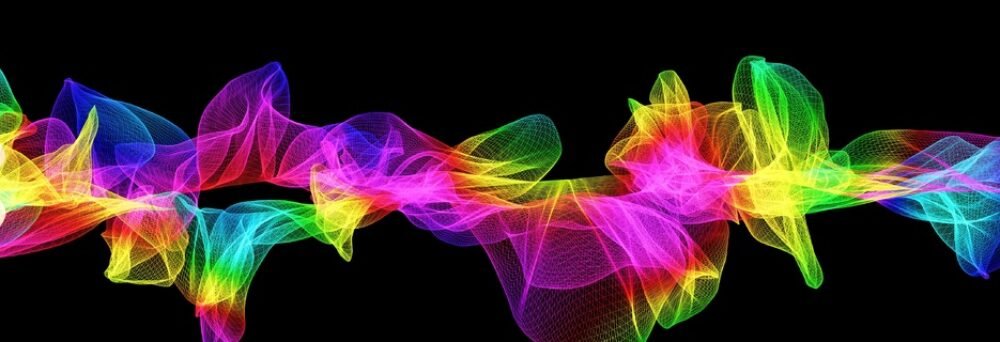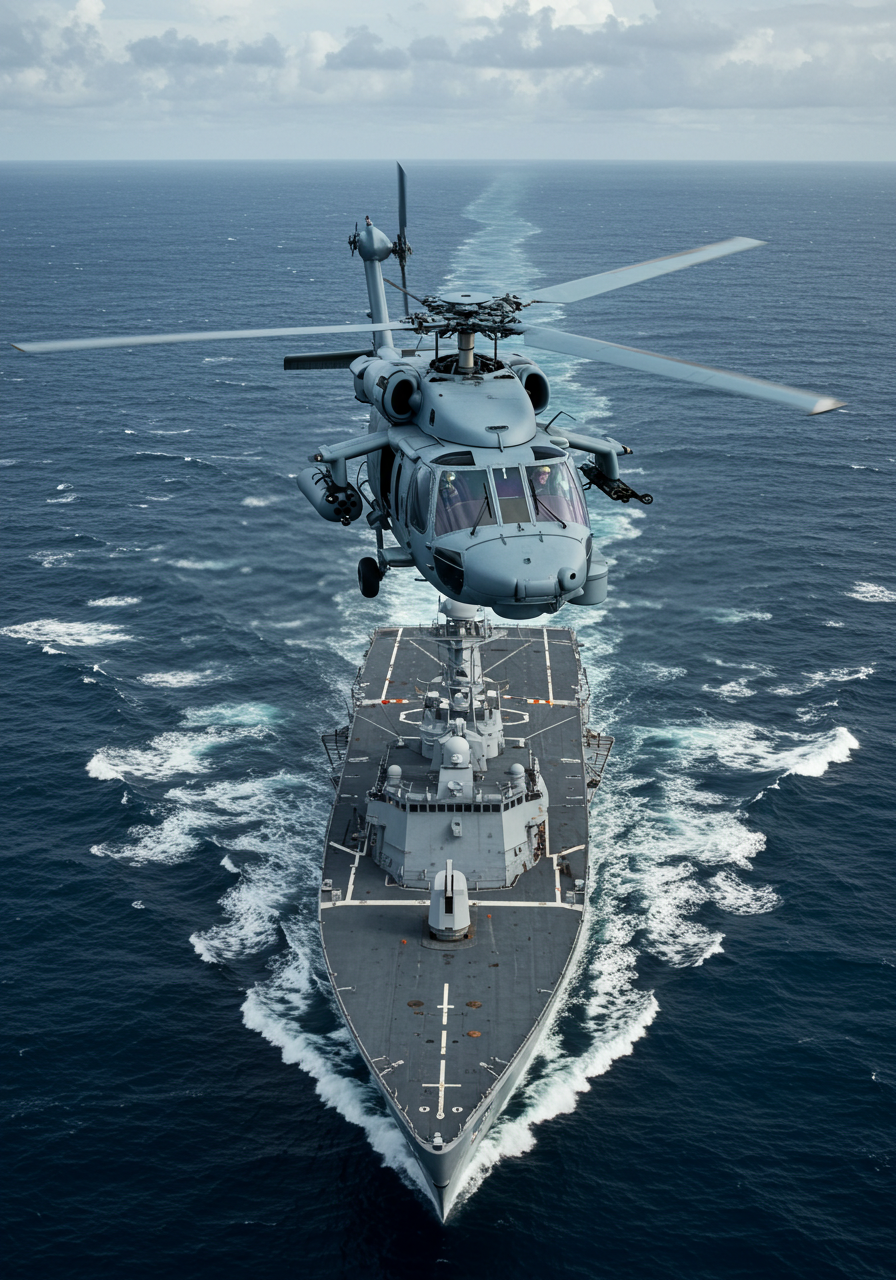Explore the future of US military helicopters in 2025 with The Rotor Revolution. Discover innovations, designs, and capabilities shaping aerial warfare.
The distinctive thud of rotor blades has long been synonymous with American military power, projecting presence, delivering critical supplies, and executing daring missions across the globe. In 2025, the landscape of US military helicopters is a fascinating blend of battle-proven workhorses undergoing continuous modernization, and revolutionary new platforms pushing the boundaries of vertical lift. From the rugged peaks of Afghanistan to the vast expanses of the Pacific, these versatile machines remain indispensable to the US Army, Navy, Marine Corps, and Air Force, adapting to new threats and evolving operational demands.
01-MH-60R/S Sea Hawk (various roles including ASW, ASUW, SAR)
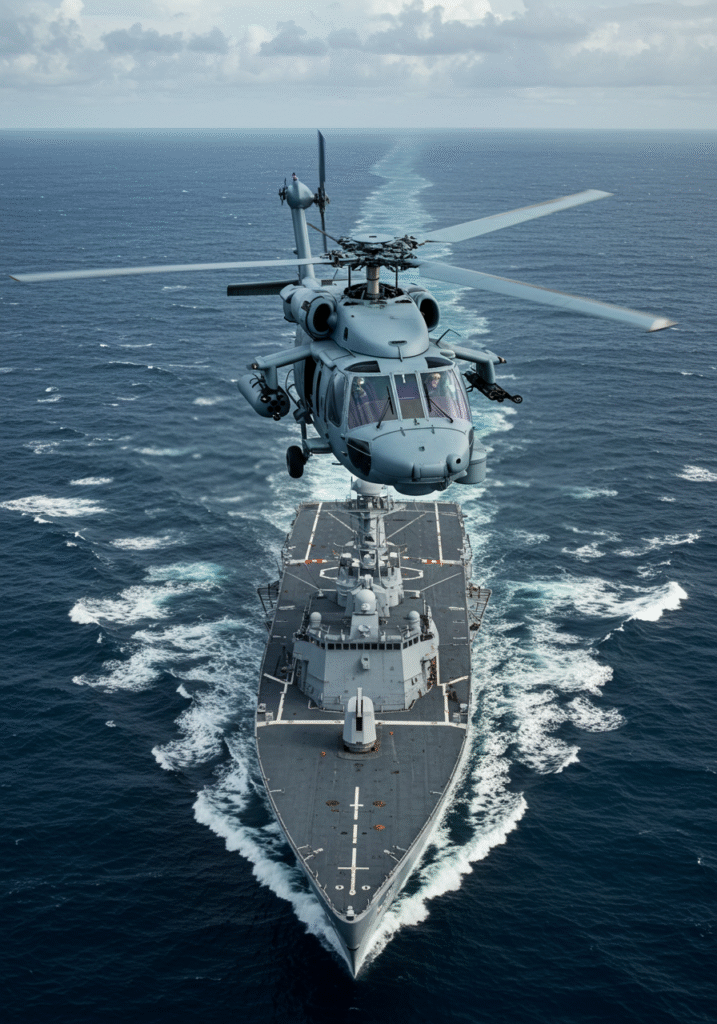
This is a dramatic aerial photograph capturing a grey military helicopter, likely an MH-60R Seahawk, in mid-flight directly above the bow of a grey naval warship. Both are positioned centrally in the frame, against a backdrop of dark blue, choppy ocean water under a partially cloudy sky.
The helicopter is seen head-on, with its rotors blurred due to motion, suggesting it’s either hovering or flying at a relatively slow speed. Below it, the warship cuts through the water, leaving white wakes on either side. The ship’s deck details, including what appears to be a gun turret at the front and various structures towards the stern, are visible. The overall composition highlights the close operational relationship between naval aviation and surface vessels.
02-MH-53E Sea Dragon (mine countermeasures, heavy lift)
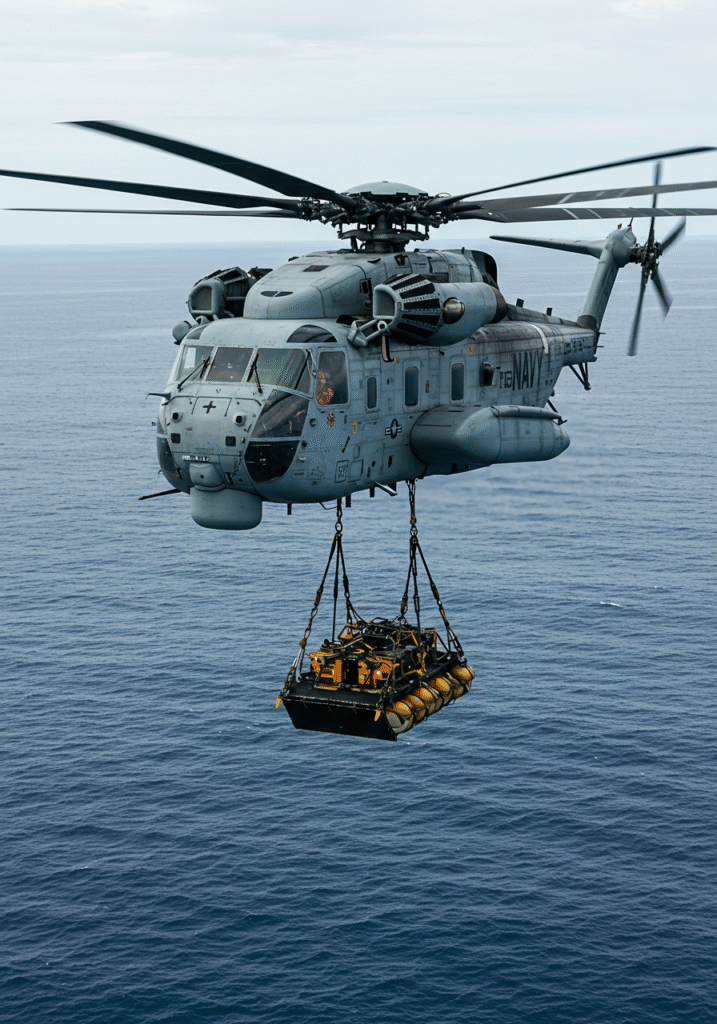
This is an aerial photograph of a large, grey military helicopter, likely an MH-53E Sea Dragon, in flight over a dark blue body of water. The helicopter is depicted in mid-air, carrying a piece of equipment suspended beneath it by cables.
The helicopter has multiple rotor blades (visible as a blur due to motion) and large sponsons on either side of its fuselage. The suspended equipment appears to be a mine countermeasures sled or similar maritime equipment, characterized by its dark color, yellow components, and what looks like flotation devices. The sky above is overcast, and the water below shows some ripples, suggesting motion. The overall image highlights the heavy-lift and specialized capabilities of the helicopter.
03-AH-1Z Viper (attack helicopter)
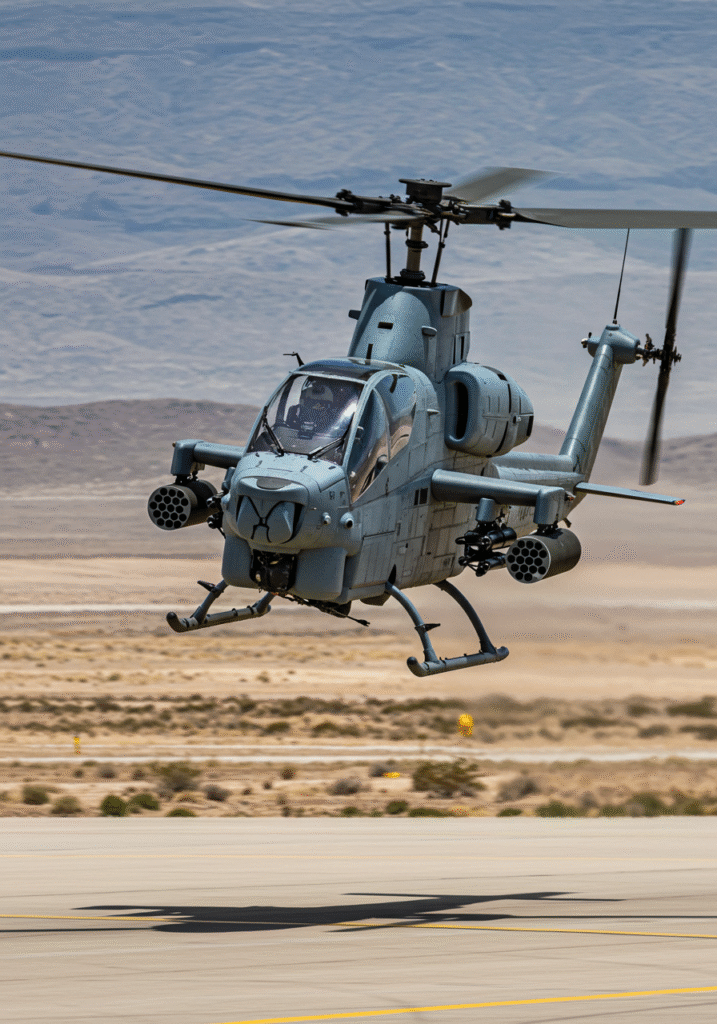
This is a dynamic ground-level photograph of a grey military attack helicopter, likely an AH-1Z Viper, in low-altitude flight or hover. The helicopter is positioned slightly above what appears to be an airfield or concrete pad, with its skids almost touching the ground, and a distinct shadow cast beneath it.
The helicopter is armed with rocket pods visible on its stub wings and a turreted gun system under the nose. The main rotor blades are blurred due to motion, indicating active flight. In the background, there’s a arid, desert-like landscape with distant hills or mountains under a clear sky. The image conveys the power and readiness of the attack helicopter.
04-UH-1Y Venom (utility helicopter)
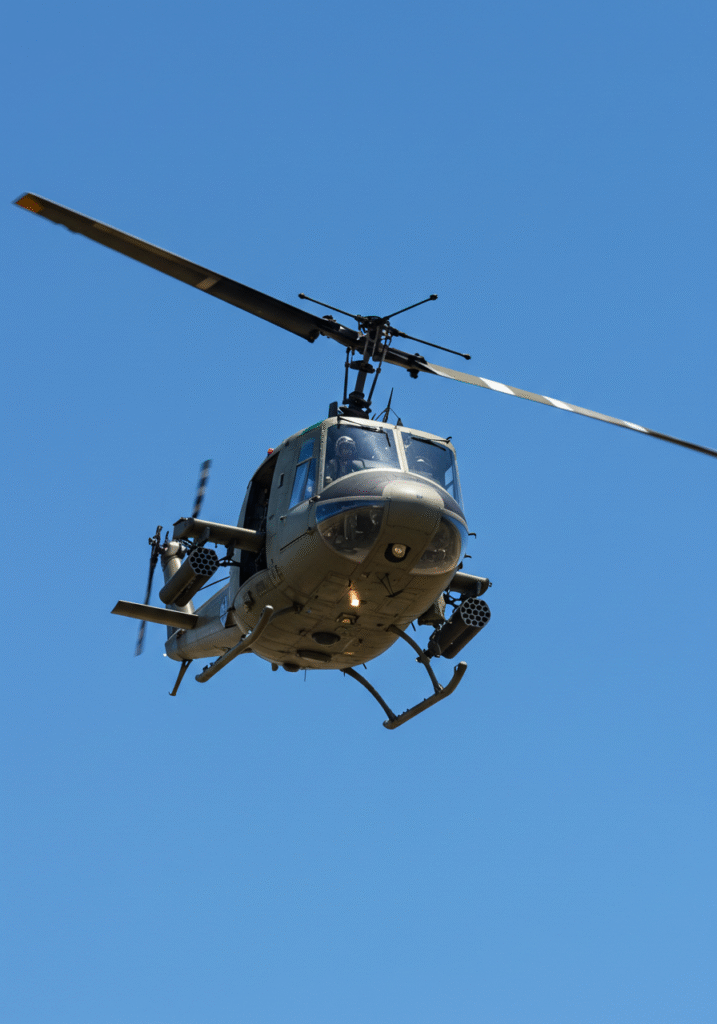
This is a clear, low-angle photograph of a military utility helicopter, likely a UH-1Y Venom, in flight against a bright, cloudless blue sky. The helicopter is seen from a head-on, slightly below perspective, showcasing its distinctive shape.
The main rotor blades are visible as a blur due to their rotation, and the tail rotor is also blurred. The helicopter is equipped with rocket pods on either side, suggesting a combat utility role. The landing skids are visible underneath, and some internal details of the cockpit can be discerned through the canopy. The overall image captures the helicopter in active flight, conveying a sense of movement and purpose.
05-CH-53E Super Stallion (heavy lift)
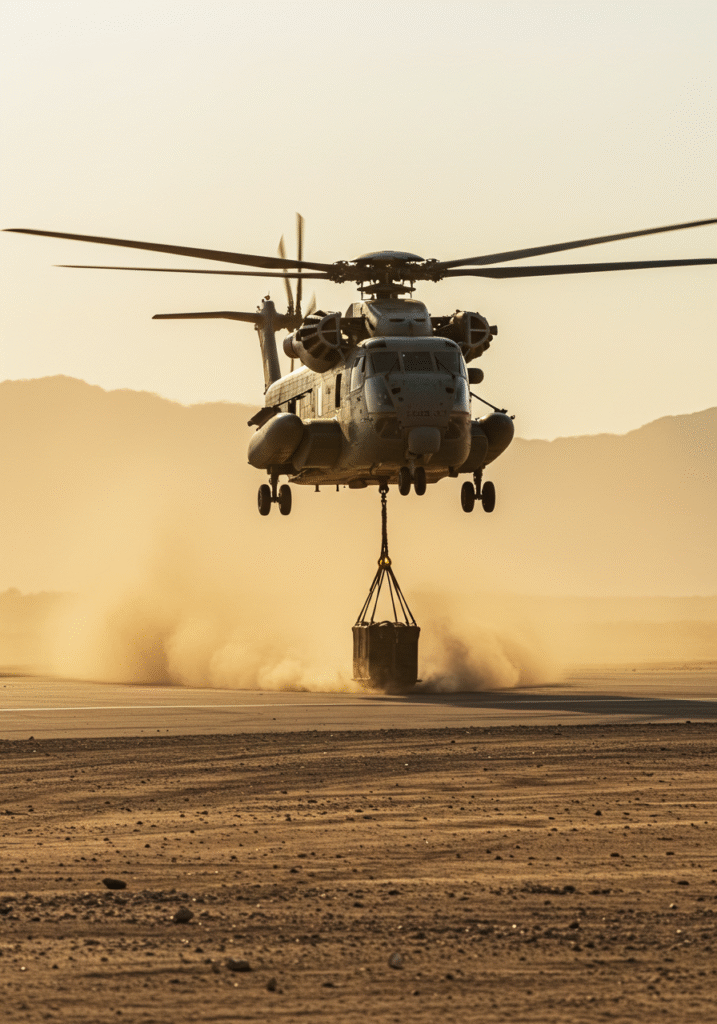
This is a powerful photograph of a large, heavy-lift military helicopter, likely a CH-53E Super Stallion, captured at a low altitude over a desert landscape during what appears to be sunrise or sunset, given the warm, golden light.
The helicopter is performing a lift operation, with a large container or cargo net suspended beneath its fuselage. Its powerful rotors are kicking up a significant amount of dust and sand from the ground, creating a dramatic cloud around and behind the aircraft. The landing gear is down, suggesting it’s either just taken off, is about to land, or is hovering in a very low-level operation. In the background, silhouetted mountains complete the arid, remote setting. The image conveys the immense power and capability of the helicopter in a challenging environment.
06-CH-53K King Stallion (heavy lift, under development)

This is a dynamic ground-level photograph capturing a large, grey military heavy-lift helicopter, likely a CH-53K King Stallion, in the process of lifting cargo. The helicopter is hovering relatively low over an airfield or paved area, with two large, netted cargo loads suspended beneath it by cables.
Several military personnel are visible on the ground, some looking towards the helicopter, indicating a cargo loading or offloading operation. Various military vehicles and structures can be seen in the background under a bright, clear sky, suggesting an active military base or training exercise. The helicopter’s main rotor blades are blurred, conveying motion and the power required for such a heavy lift. The image captures a moment of coordinated military logistics.
07-MV-22B Osprey (tiltrotor)

This is a dynamic photograph depicting a grey V-22 Osprey tiltrotor aircraft in a low-altitude hover or landing approach, with its nacelles tilted upwards for vertical flight. The aircraft is positioned above an airfield or open ground, with military personnel and vehicles visible below.
The Osprey’s two large propellers are visible, though somewhat blurred due to rotation. Below the aircraft, several soldiers, armed and in tactical gear, are seen moving across the ground, and two military vehicles (possibly armored personnel carriers or tanks) are present, with one emitting a puff of smoke. The background is a mix of a hazy sky and a distant treeline. The image conveys a sense of active military operations, possibly a troop insertion or extraction.
Conclusion
The US military helicopter fleet in 2025 is a testament to continuous adaptation and technological advancement. The formidable capabilities of the Black Hawk, Apache, and Chinook, enhanced by ongoing modernization programs, ensure that these proven platforms remain highly effective. Simultaneously, the V-22 Osprey continues to redefine vertical lift, while the FLRAA program promises to usher in a new era of speed and reach for assault operations. The increasing embrace of unmanned systems and AI-driven autonomy is fundamentally reshaping how helicopters operate, creating a hybrid battlefield where manned and unmanned assets work seamlessly together. As global challenges evolve, the agility, resilience, and sheer power of US military helicopters will remain an indispensable cornerstone of national defense and power projection.
